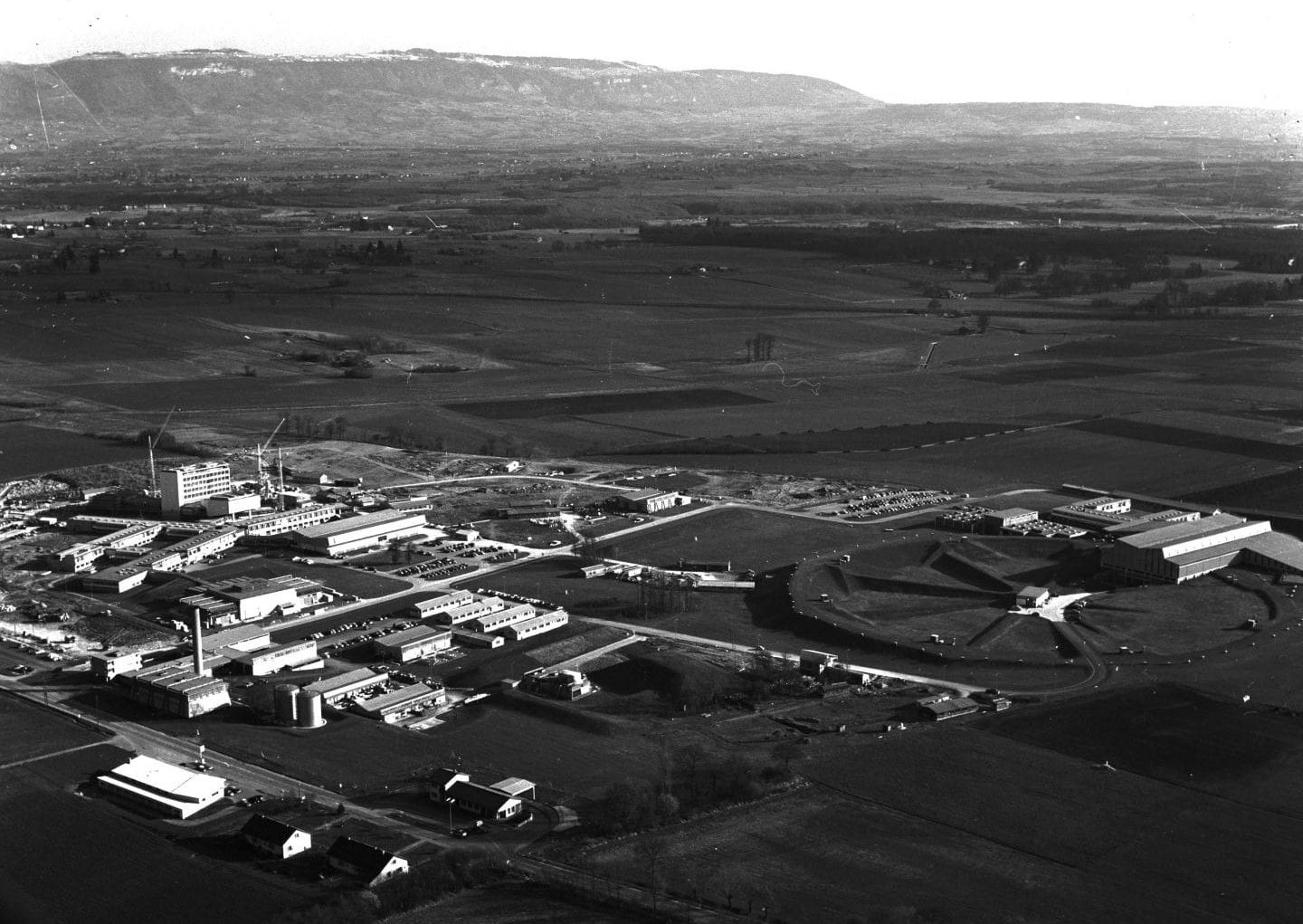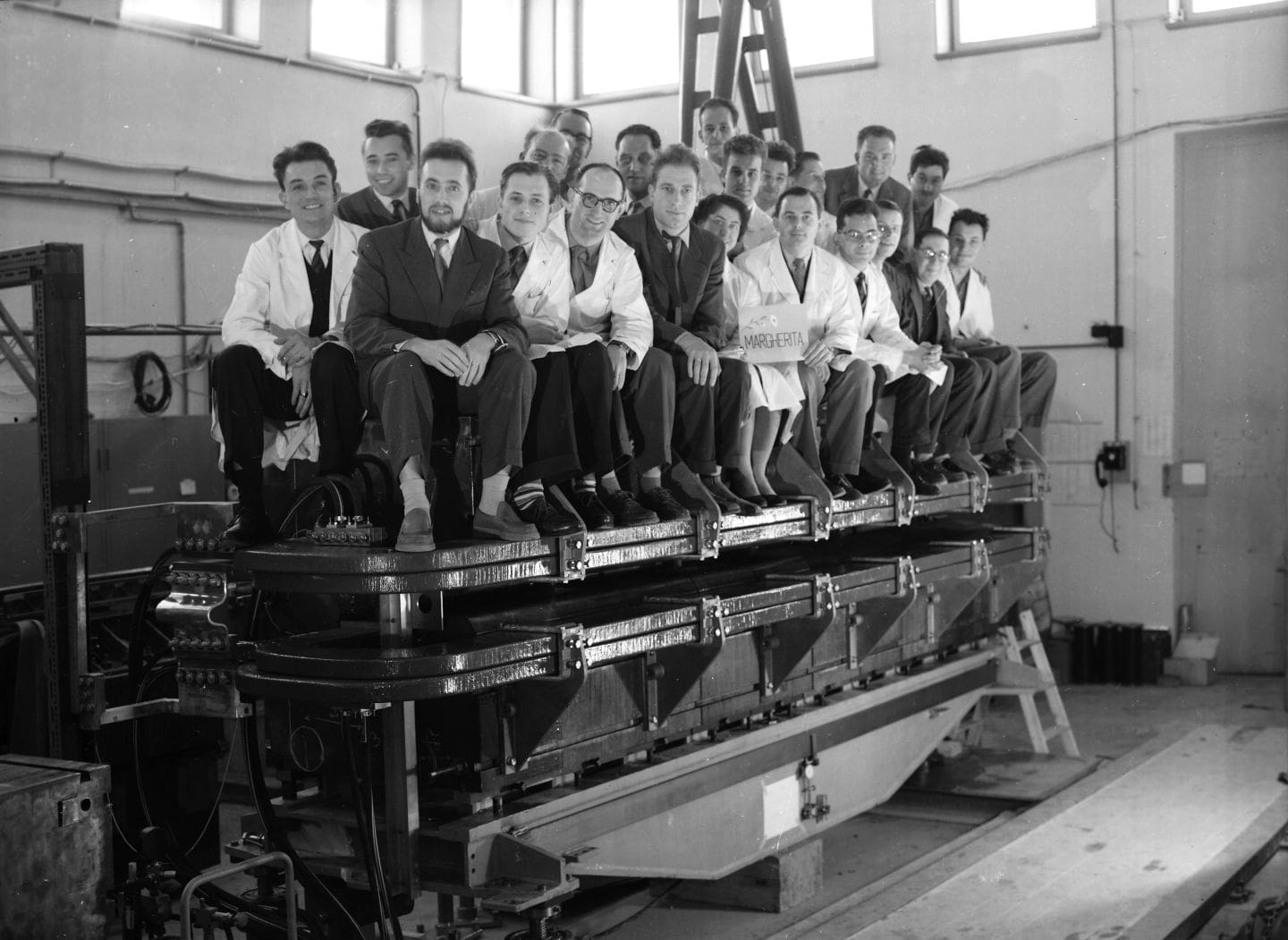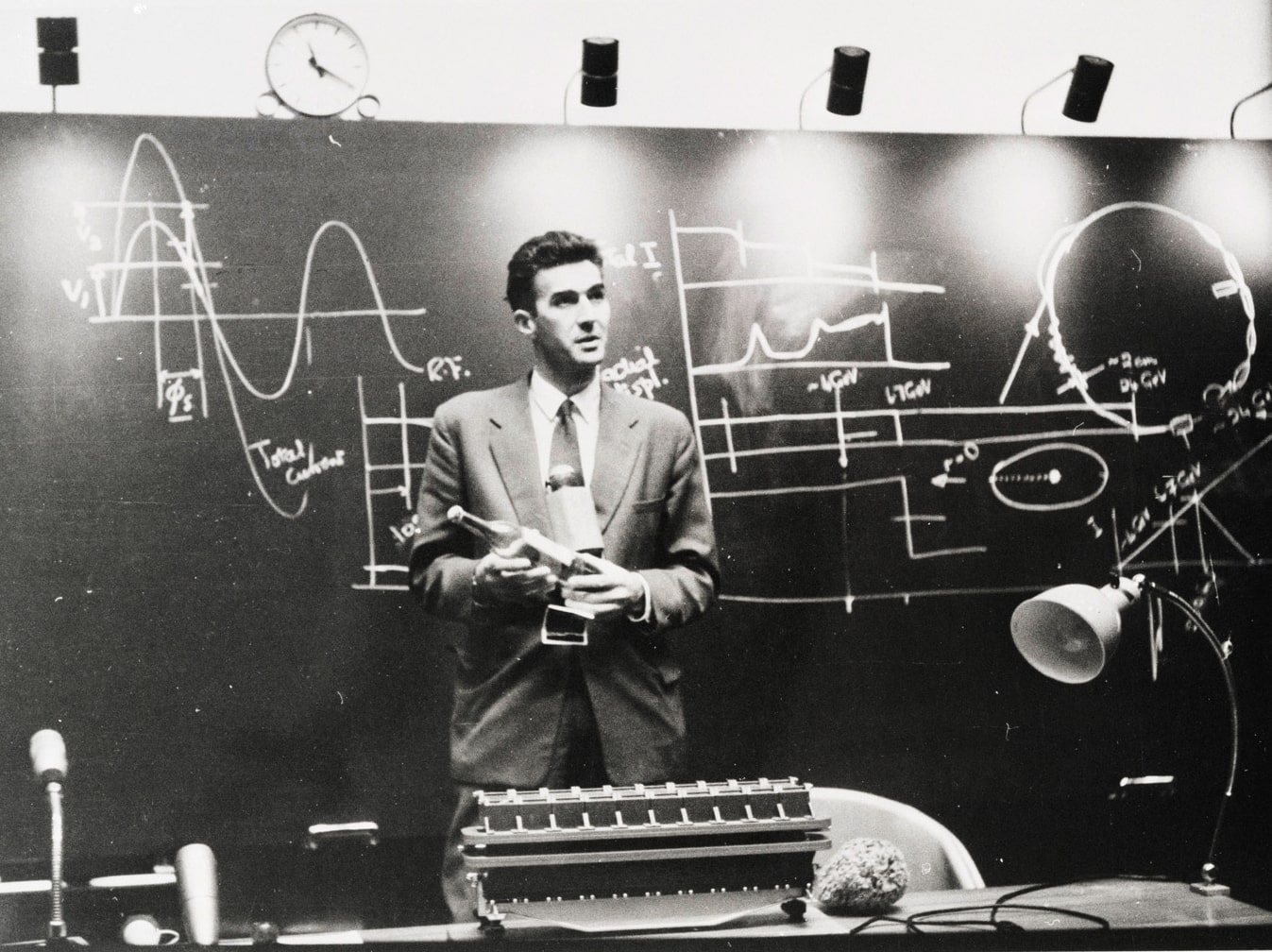CERN70: The heart of CERN’s accelerator chain
29 February 2024 · Voir en français
Part 4 of the CERN70 feature series. Find out more: cern70.cern
Günther Plass joined the Magnets group at the Proton Synchrotron (PS) in 1956.
Three years later, the machine went into service and became the most powerful accelerator in the world

In 1957, CERN staff moved into the new buildings on the Meyrin site in Geneva, and the rooms were rapidly filled with equipment for the Proton Synchrotron (PS).
By the end of July 1959, assembly of the PS – the accelerator is more than 600 metres in circumference! - was completed and, on 16 September, the first beam was circulated. On 24 November 1959, the PS accelerated protons for the first time to its nominal energy of 24 gigaelectronvolts (GeV).
The machine is based on a revolutionary new concept developed at Brookhaven National Laboratory in the United States, which makes it possible, for the same budget, to achieve a much higher particle energy than with a traditional synchrotron. In this way, the young Laboratory demonstrated its ability to translate a new concept into reality.
Even today, 65 years later, the PS is the heart of CERN's accelerator chain. And while the machine has of course undergone many phases of improvement, its fundamental structure has remained unchanged.
Recollections
Physicists from a dozen European countries would work together on the construction, and later the use, of this almost unbelievable machine, which would stretch technologies to their very limits.
Günther Plass

Günther Plass joined the Proton Synchrotron (PS) team in 1956 and worked for 25 years on PS-related assignments. In the 1980s, he became Deputy Project Leader of the Large Electron Positron Collider (LEP), before becoming CERN's Director of Accelerators.
“A dream began for me in autumn 1954 at the annual meeting of the German Physical Society. At that gathering, an enthusiastic Werner Heisenberg spoke of recent meetings preparing for CERN, a European Laboratory for Fundamental Physics just being launched in Geneva. A pioneering European enterprise, the new laboratory was to build a particle accelerator hundreds of metres in circumference, huge compared to the cyclotrons I had been reading about at the time. Physicists from a dozen European countries would work together on the construction, and later the use, of this almost unbelievable machine, which would stretch technologies to their very limits.
I certainly wasn’t the only one to be deeply impressed by this report. I even nurtured the hope that my moderate command of languages might one day help me to participate in that enterprise. Back in 1950, I had spent several weeks on a language course in Dijon, France, and in 1951 I spent another few weeks picking potatoes along with students from several countries near Hull in the United Kingdom.

About one and a half years after Heisenberg’s presentation, I learned that my current [magnet] specialisation was in demand for CERN’s project, so I rushed off my application and, much to my surprise, was offered a job. On 18 June 1956, I dutifully reported to the PS Division’s secretariat at the Institute of Physics. I was directed to join my future colleagues in the lecture hall, where a Symposium on Particle Accelerators and Pion Physics was under way. I thus began my career by listening to talks about pions, muons and strange particles — what a mysterious new world I had come into!”
----
This interview is adapted from the 2004 book “Infinitely CERN”, published to celebrate CERN’s 50th anniversary. Günther Plass passed away in 2020, aged 90.
